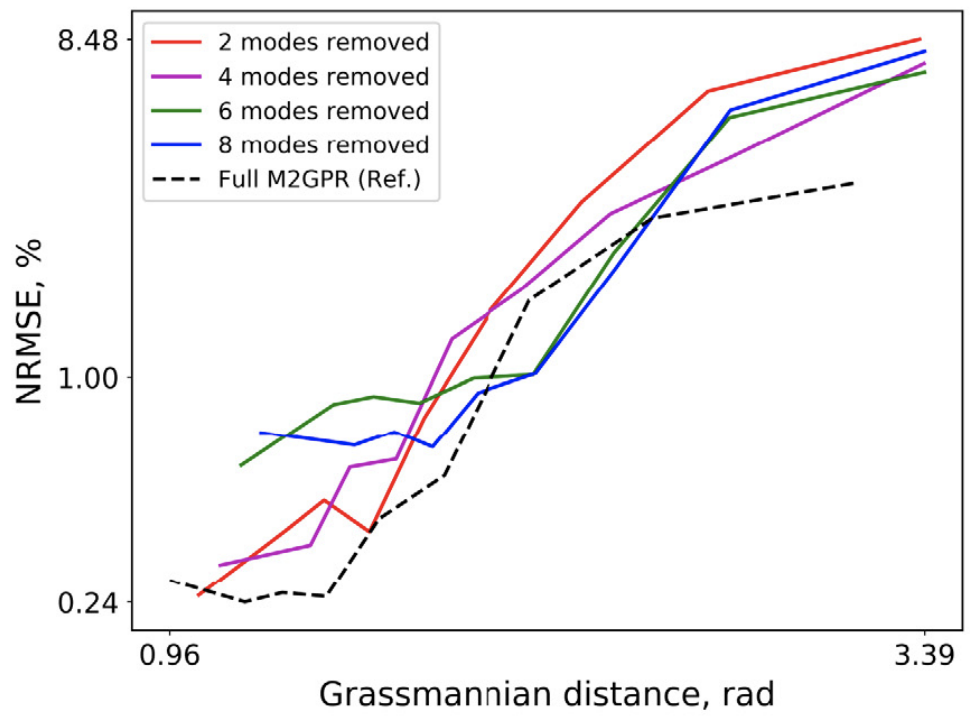Published: Jul 22, 2022 by Daning Huang
This study investigates the impact of the high-temperature effect, especially the real gas effect and chemical reactions, on hypersonic aerothermodynamic solutions of double cone and double wedge configurations, as well as the fluid–thermal–structural interaction of a double wedge configuration in hypersonic flow. This work is done in collaboration with Dr. Kyle M. Hanquist’s group at Univ. of Arizona.
The work contributes in two aspects.

On the methodology side, we developed and implemented the multi-fidelity multi-variate Gaussian process regression (M2GPR) model for problems with high-dimensional outputs. The model achieves a balance between model accuracy and computational cost of sample generation, using the combination of a few high-fidelity samples and many low-fidelity samples.
Most interestingly, and also well-known in multi-fidelity modeling, a combination of datasets of “higher fidelities” (e.g., RANS) does not necessarily produce a more accurate multi-fidelity surrogate. This study proposes a metric based on the Grassmannian geodesic distance to characterize the similarity between two high-dimensional datasets of different fidelity and guide the selection of datasets. It is shown empirically that a high-fidelity dataset combined with a dataset of closer distance produce a surrogate of higher accuracy.
Furthermore, we revealed theoretically and numerically the connection between M2GPR and dimension reduction methods, such as PCA (Figure below left). Unlike conventional PCA methods, M2GPR reduces high-dimensional data points (i.e., outputs) while accounting for their low-dimensional “labels” (i.e., inputs); this better informs the model of the data space geometry and thus more accurate and efficient data compression.


On the application side, the M2GPR-based aerothermal surrogate was applied to study the impact of the high-temperature effect on the FTSI response of a hypersonic skin panel. The results show the necessity of the accurate characterization of the localized heat flux, as well as the coupled FTSI analysis for the accurate assessment of the response of a compliant structure in high-temperature flowfield. The missing of critical flow physics in the computational model may result in an incorrect FTSI stability boundary with an error up to 40%.
For more details see our work SciTech2020, SciTech2021, and the more extended version JFS2022.